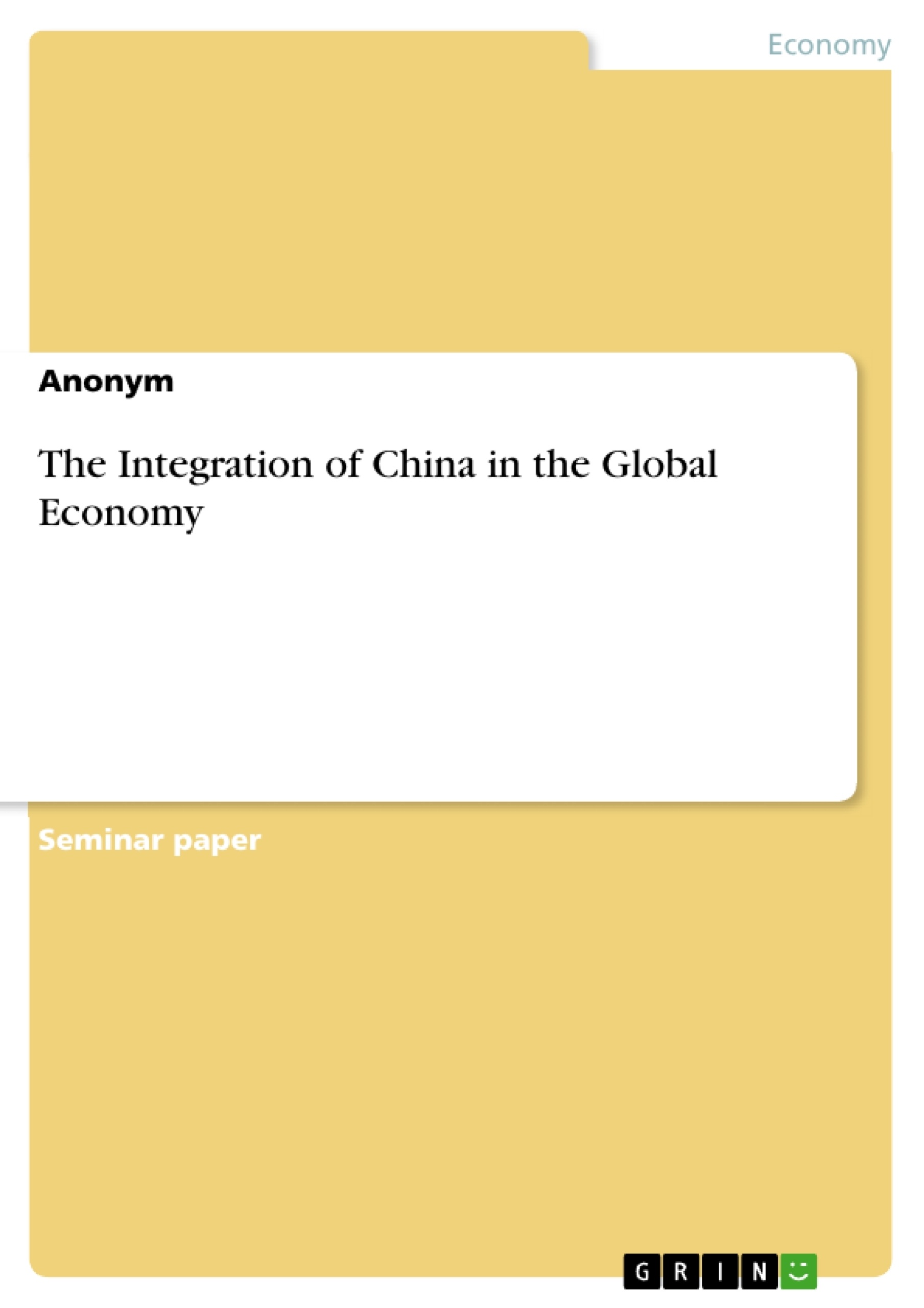The aim of this paper is to trace China's increasing integration in the world economy. In this context, the developments of the country’s foreign trade policy as well as those of the trade and the investments will be examined. Subsequently, the future prospects of China's foreign trade will be the focus of attention, with particular reference to the country's monetary regime, its Going-out strategy and the regional economic integration in Asia. The following remarks will be devoted to the key events that have paved the way for China's changing role in the global economy in the 21st century. Finally, the most recent, forward-looking measures taken by the Chinese government will be discussed, which are essential for strengthening China's international presence and its competitiveness. After a brief insight into the downside of China's global interconnection, the work is rounded off by a conclusion.
When the Chinese government under Deng Xiaoping initiated the Chinese policy of "opening up to the outside world" in 1978, no one could have foreseen the dynamics with which this modernization course would continue or that it would change China's influence on world markets and its perception in the international environment so markedly. The opening policy in the 80s and 90s was characterized by a step-by-step development according to the principle: crossing the river from stone to stone. Thus, China gradually developed from one of the poorest nations to today's second largest economy, to which a significant role is attributed worldwide. Not only as a location for investment, but also as an international competitor for markets and resources.
Table of Contents
List of Abbreviations
List of Figures
List of Tables
1 Introduction
2 China’s Integration in the global economy
2.1 China’s foreign trade policy in transition
2.2 The phases of the Chinese reform and opening policy
2.2.1 Beginnings of the opening policy
2.2.2 Strategy of export orientation
2.2.3 Expansion of opening policy and the will of joining the “World Trade Organisation (WTO)”
2.3 Further export orientation and the WTO- entry
2.4 Structures and characteristics of the Chinese foreign trade
2.5 Foreign Direct Investments in China
2.6 Future Prospects of the Chinese foreign trade policy
2.6.1 The development of the Chinese monetary regime
2.6.2 Regional economic integration
2.6.3 China’s Going - Out Strategy and FDI outflows
2.7 China’s changing role in the 21st century
2.7.1 WTO regulations vs. own interests
2.7.2 The global Financial Crisis
2.7.3 Xi Jinping and the economic realignment
2.8 Setting the strategic course for the future
2.8.1 China's rise to technological leadership
2.8.2 China’s development into a global investor
2.8.3 China's active transformation of international conditions
2.8.4 The downside of global interconnection
3 Conclusion
4 Bibliography
- Citation du texte
- Anonyme,, 2020, The Integration of China in the Global Economy, Munich, GRIN Verlag, https://www.grin.com/document/1040321
-

-

-

-
Téléchargez vos propres textes! Gagnez de l'argent et un iPhone X. -

-
Téléchargez vos propres textes! Gagnez de l'argent et un iPhone X. -

-
Téléchargez vos propres textes! Gagnez de l'argent et un iPhone X. -

-
Téléchargez vos propres textes! Gagnez de l'argent et un iPhone X. -

-
Téléchargez vos propres textes! Gagnez de l'argent et un iPhone X. -

-
Téléchargez vos propres textes! Gagnez de l'argent et un iPhone X. -

-
Téléchargez vos propres textes! Gagnez de l'argent et un iPhone X. -

-
Téléchargez vos propres textes! Gagnez de l'argent et un iPhone X.

